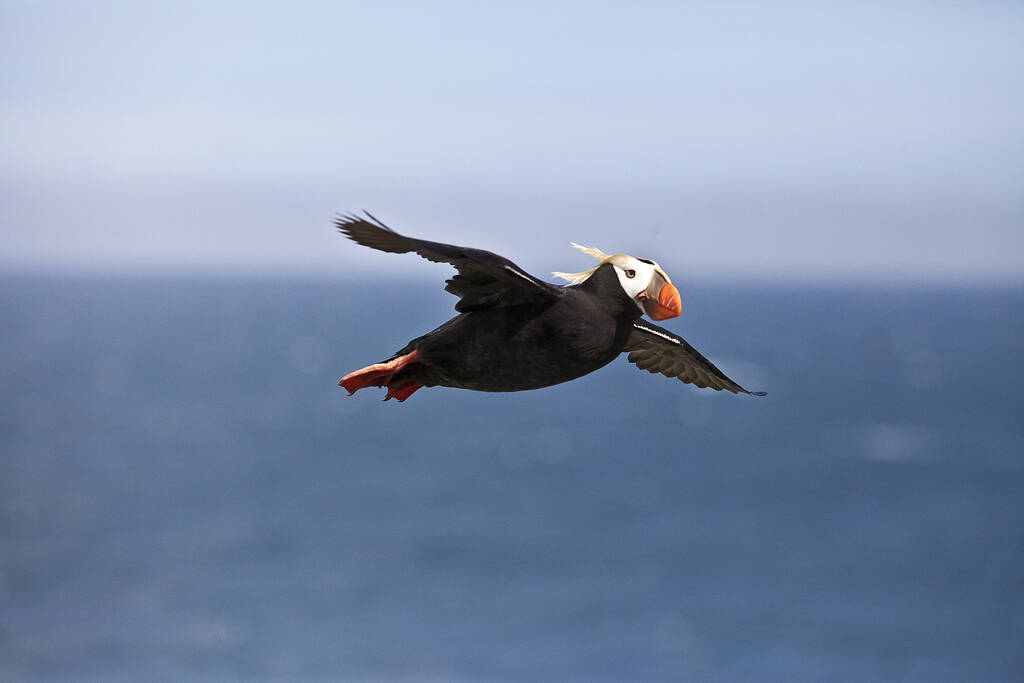The Arctic Report Card, a compilation of northern science by researchers from all over the planet — most of them doing work in Alaska — came out in mid-December at the fall meeting of the American Geophysical Union in Chicago.
In summary, what smart people predicted in 2006, during the first report card press conference, is still trending the same way: We are living in a much-warmer far north.
Some of the changes are subtle and hard for us to notice. For example, daily temperatures being a few degrees higher than that day in the past. Others are more striking, like Alaska beachcombers finding seabird carcasses washed up in twos and threes where in years before they saw none.
Robb Kaler of the U.S. Fish and Wildlife Service in Anchorage was lead author of an essay about dead seabirds on the coasts of the Bering and Chukchi seas. His story appears in a booklet released by National Oceanic and Atmospheric Administration officials, sponsors of the Arctic Report Card.
Birds like puffins and murres have for a long time thrived on high-calorie cold-water fish from Alaska saltwater. Since 2017, people in communities on the western Alaska coast have found more and more dead birds.
In summer and fall 2022, people from Izembek Lagoon to Point Hope reported about 450 carcasses of murres, puffins, auklets, shearwaters, fulmars and kittiwakes.
That continues a streak of more seabird deaths noticed in recent years. Kaler and other authors reported that people have found about 1 million dead seabirds on Alaska’s western coast and the Gulf of Alaska in the last decade.
That compares to the 1 million dead birds found on beaches in the 40 years preceding that.
Of 117 seabird carcasses scientists examined from 2017 to 2021, 92 were emaciated.
What changed in the Bering and Chukchi seas, the former known as one of the richest fishing grounds on Earth?
Less ice floating on the top of northern oceans (a trend the Arctic Report Card scientists have quietly shouted about since its inception) allows water to absorb more heat from the sun.
The warmer ocean has probably caused nutrient-rich fish like sand lance and capelin to decline. This has happened while less-nutritious species like juvenile walleye pollock have increased in the waters offshore of western Alaska. Biologists have referred to pollock as “junk food,” which may not be able to sustain birds or at least make them hesitant or unable to lay eggs.
“Observations at northern seabird breeding colonies indicate lack of breeding attempts or very late and unsuccessful breeding over several years,” the scientists wrote. “The seabird die-offs stem from a lack of food or unfavorable foraging conditions, indicating ecosystem changes that may be associated with abnormally high ocean water temperatures.”
Since the late 1970s, the University of Alaska Fairbanks’ Geophysical Institute has provided this column free in cooperation with the UAF research community. Ned Rozell ned.rozell@alaska.edu is a science writer for the Geophysical Institute.
images:
1. A tufted puffin in flight above Bogoslof Island in the Bering Sea. Photo by Ajay Varma, USGS, public domain.
2. Slabs of sea ice float in the Chukchi Sea in July 2021. Photo by Lisa Hupp, U.S. Fish and Wildlife Service, public domain.
3. A red-legged kittiwake flies from a cliff on Buldir Island in the Aleutians. Photo by R. Dugan, U.S. Fish and Wildlife Service, public domain.
4. Parakeet auklets on a hillside of Buldir Island in the Aleutians. Photo by R. Dugan, U.S. Fish and Wildlife Service, public domain.

